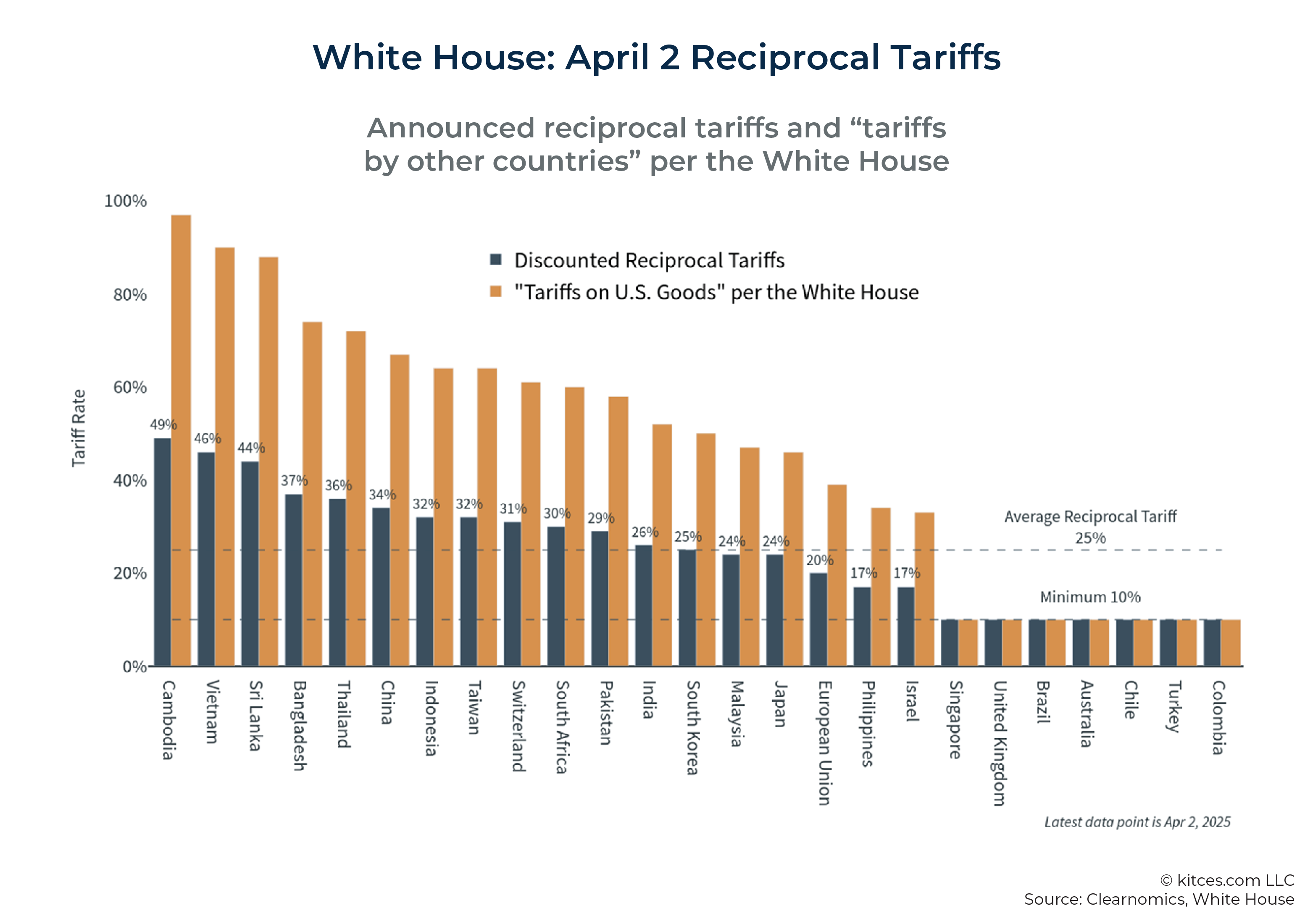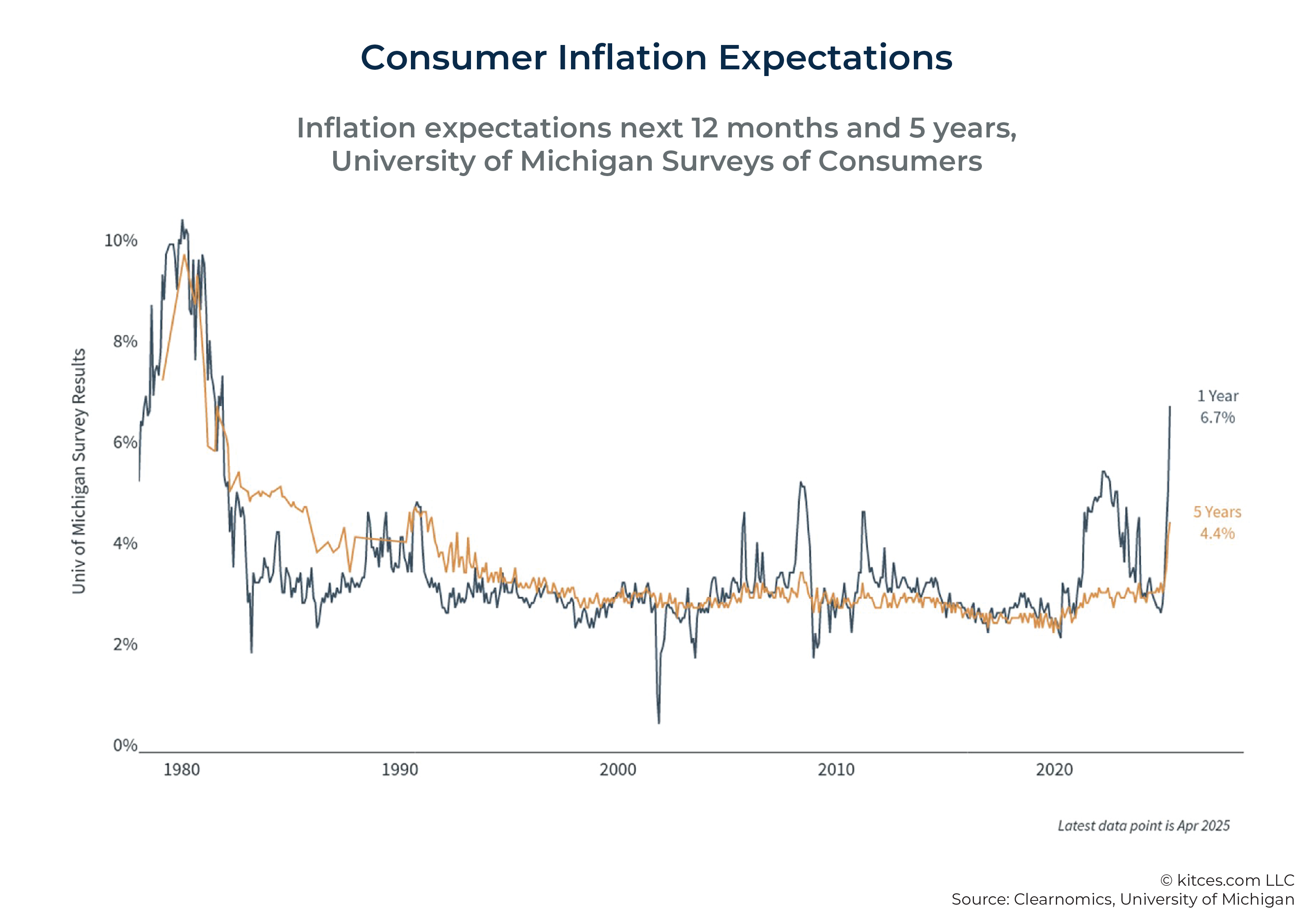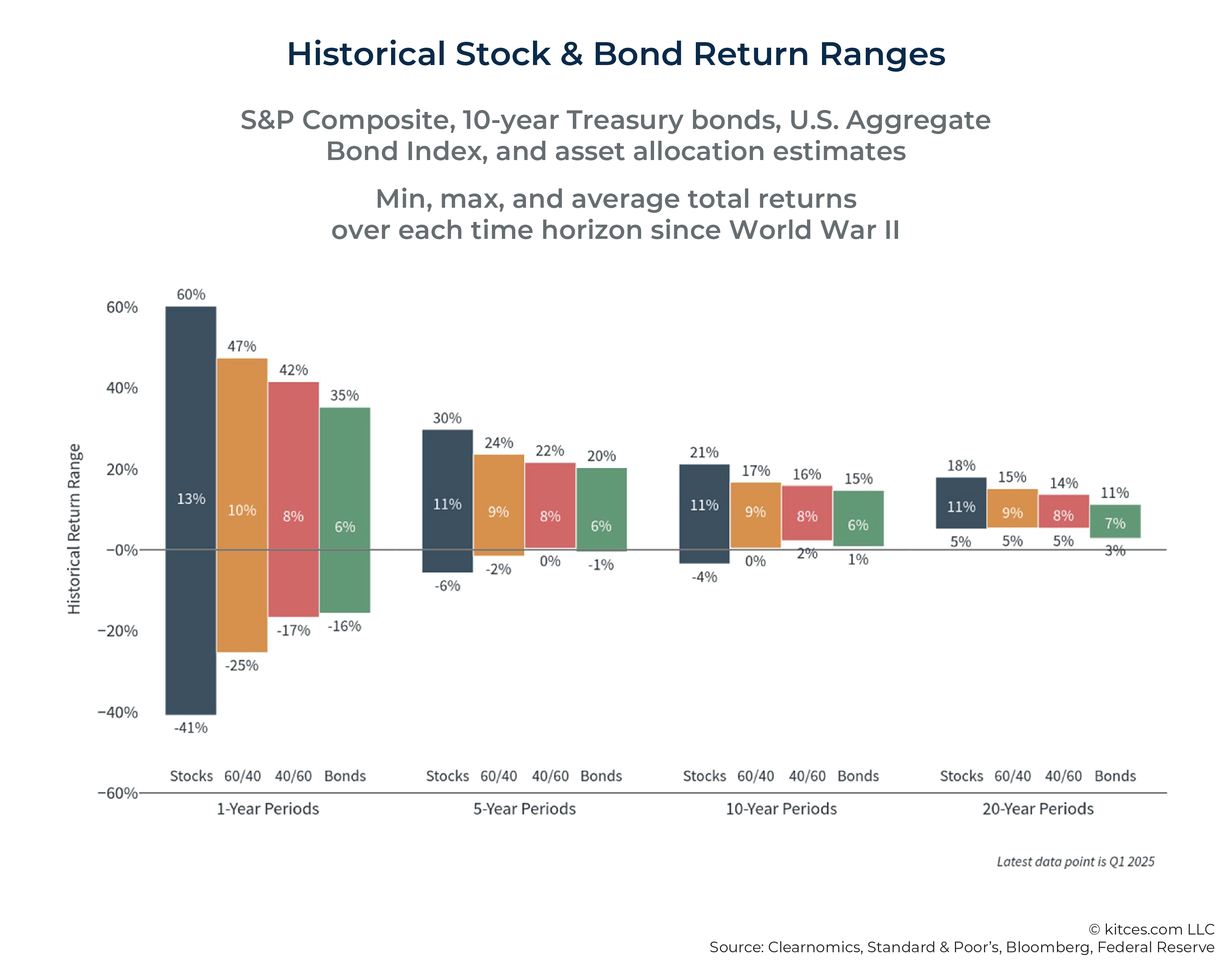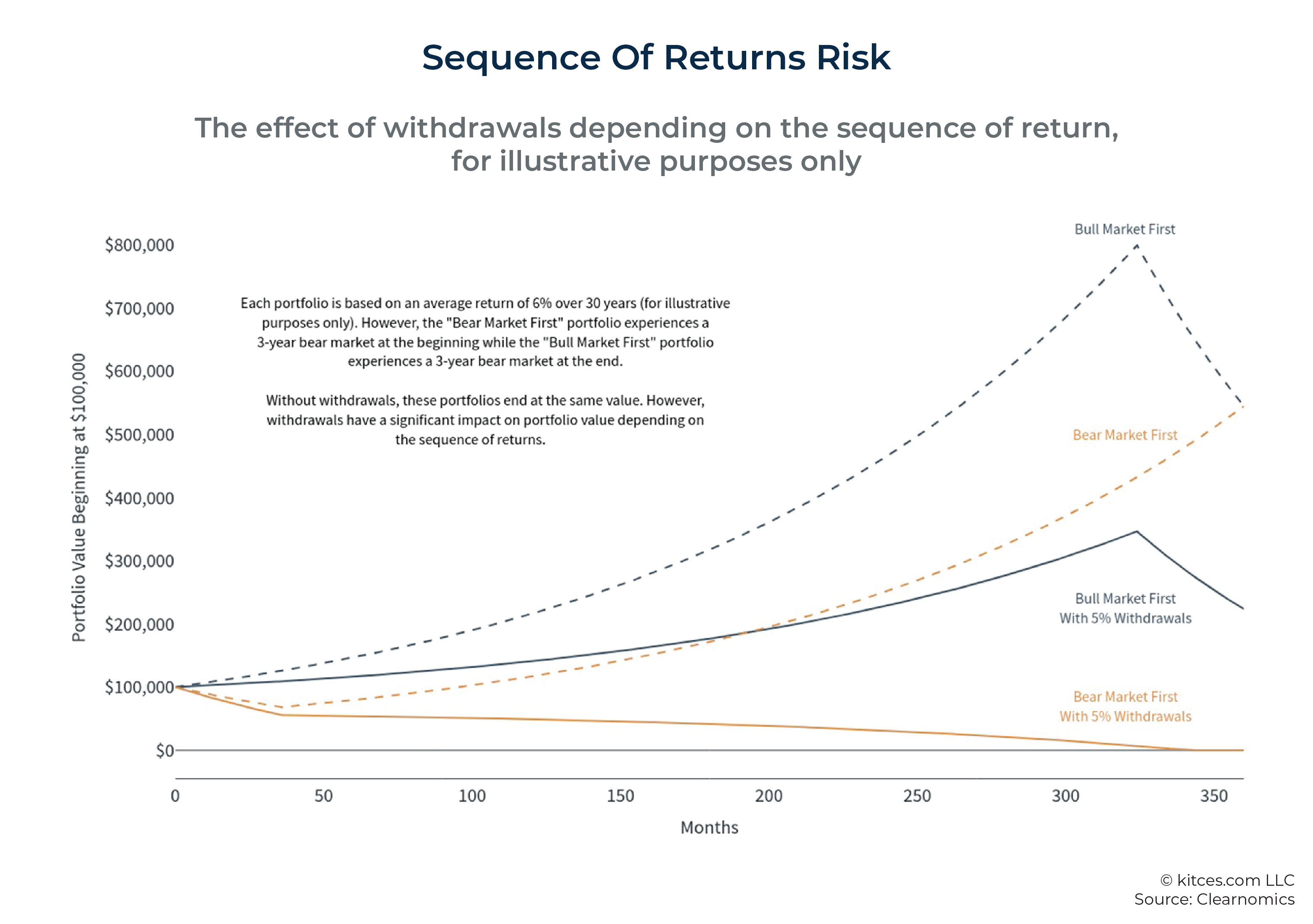Executive Summary
The White House's tariff policies have dominated headlines in recent weeks, raising concerns among investors, consumers, and businesses. A rapid sequence of policy announcements and reversals has created volatility across nearly every asset class, with the S&P 500 falling to near-bear-market levels before rebounding sharply. In these moments, the conversations that advisors have with their clients play a crucial role in helping clients maintain perspective, avoid emotional decisions, and stay committed to their long-term financial plans. While clients may ask about the short-term impacts of the tariffs, many concerns are more deeply rooted in long-term goals.
In this article, James Liu, CEO of Clearnomics, and Sydney Squires, Senior Financial Planning Nerd, address how advisors can navigate tariff-related conversations by leading with empathy, listening carefully to clients' concerns, and framing the conversation in a way that helps clients feel calm and grounded.
For clients reaching out in distress, starting with facts may be counterproductive; when clients are overwhelmed, they may not be in a mindset to absorb information. Instead, allowing them to fully voice their fears can build trust and help them feel understood. Using mirroring language (e.g., repeating a client's own key words to affirm what they're feeling) and asking thoughtful follow-up questions are two techniques advisors can use to create that space. Once the emotional groundwork is laid, the conversation can shift to exploring the potential implications of tariffs and re-centering the focus on long-term goals.
Many clients may be bracing for higher prices, as even a minimum level of tariffs could affect a wide range of goods through an interconnected global supply chain. In these conversations, advisors can provide context by pointing to recent years in which trade deals softened the impact of earlier tariff announcements. The current environment also presents an opportunity for advisors to emphasize the benefits of diversification – how it has helped protect client portfolios from the worst of recent market declines while still allowing them to participate in market gains. No diversification strategy can eliminate all risk, but advisors can acknowledge that market declines don't feel good while affirming that a client's plan is still on track.
Finally, volatile markets offer a powerful opportunity for advisors to reinforce the value of financial advice. Market pullbacks may create openings for tax-loss harvesting, 'discounted' Roth conversions, and portfolio rebalancing – allowing clients to focus on what they can still control, even when headlines feel overwhelming.
Ultimately, the key point is that the current economic climate presents a wide range of possible outcomes – and while many news headlines may emphasize the negatives, there are positive scenarios on the horizon as well. When advisors can balance empathy with facts, clients can leave conversations feeling both heard and prepared for whatever comes next!
The ongoing nature of trade wars and daily news headlines has raised concerns among investors, consumers, and businesses. Within a single week, the S&P 500 fell to near-bear-market levels before rebounding the most in a single day since the 2008 global financial crisis. The White House's tariff negotiations continue to drive uncertainty, resulting in market volatility across practically every asset class, including stocks and bonds.
In times like these, the conversations financial advisors have with clients are more important than ever. Advisors play a crucial role in helping clients maintain perspective, avoid emotional decisions, understand the role of each asset in their portfolio, and stay committed to their long-term financial plans. Whether through one-on-one meetings, video calls, charts and visuals, or other means, advisors are uniquely positioned to address the true source of client concerns. Framing the tariff conversation along long-term goals – and helping clients see past short-term headlines to address their specific concerns – can reinforce trust, reduce anxiety, and provide clarity in this challenging market.
For those interested, these Clearnomics charts can be accessed here as a downloadable PDF. By leveraging visual storytelling and client-friendly messaging, advisors can help clients understand the current environment and achieve their financial goals.
Recent Tariff And Trade War Events
Tariffs can be challenging to discuss with clients because trade policies often serve multiple – and sometimes conflicting – objectives. These include reducing the trade deficit, generating revenue, protecting domestic industries, and improving 'fairness' in global commerce. Naturally, both advisors and clients may have strong personal or political views on many of these issues. While providing clear perspectives to clients is an important goal for advisors, diving too deep into the policy details may not be helpful for every client conversation.
To address why tariffs matter from a portfolio perspective, the key takeaway is that they can increase inflation while reducing economic growth. So, while tariffs may help to correct trade imbalances in the economy, they also affect stocks, bonds, and other asset classes – making them relevant to nearly every investor.
Understanding the motives behind recent White House policy decisions and how tariff levels are being determined can help advisors frame the conversation in a more productive way. The chart below highlights the announced "discounted reciprocal tariffs" alongside what the White House labeled as "tariffs on U.S. goods" by other countries, offering context on the policy approach.
The Evolving Nature Of Tariff Discussions
The negotiations surrounding tariffs and global trade agreements are evolving quickly. It was only back on April 2 that the White House announced "discounted reciprocal tariffs" on most trading partners, branding the date as "Liberation Day". The approach was somewhat nonstandard and left many wondering how certain parameters were chosen. Broadly, the administration framed it as a push to address trade imbalances and encourage other countries to buy more U.S. goods.
The terminology alone can confuse clients. These tariffs are referred to as:
- "Reciprocal": Intended to match the level of tariffs other countries impose on U.S. goods.
- "Discounted": Set below the full level of foreign tariffs – initially at a 10% minimum, with an average tariff rate across countries of 25%.
The chart shown earlier illustrates the tariff levels announced by the White House.
To add to the confusion, the administration also cited the so-called Tariffs Charged to the U.S.A by other countries, which economists pointed out were not actual tariffs but a measure of the U.S. trade deficit with each country. The Office of the U.S. Trade Representative later clarified this in a post on their website. Regardless of what these numbers are called, they represent the level of trade imbalance between the U.S. and each country.
Despite the administration's framing, markets reacted negatively to this announcement – largely because the average tariff level far exceeded the expected 10%. Bond markets also raised alarm as a selloff in Treasuries drove yields higher, sending ripples through the economy. When China responded with retaliatory tariffs, the situation escalated quickly: 125% tariffs on U.S. goods and 145% on Chinese goods. This represented the worst-case trade war scenario that markets feared.
Then, in a dramatic shift just one week later on April 9, the administration announced a 90-day pause on tariffs above 10% for all countries except China. This signaled the administration's willingness to negotiate on a country-by-country basis, softening its initial hardline stance. Markets rallied in response, leading to the largest single-day moves across major market indices since 2008:
- S&P 500: +9.5%
- Nasdaq: +12.2%
- Dow: +7.9%
The upside scenario for investors is that new trade deals could be approved – potentially even with China over time. But the fast-moving developments have left many clients wondering whether tariffs are being used primarily as a negotiating tactic, or whether the administration is committed to following through on their full implementation.
Framing Up Tariff Conversations By Starting With Client Empathy
With all the headlines and market moves, some clients will understandably feel anxious, while others might see potential opportunities. Political and economic decisions often trigger stress on one side of the political aisle or the other (as one advisor put it: Approximately half of their clients think the world is ending at any given time). However, during sharp market declines, clients across the board may feel some degree of investment-related stress.
When a concerned client calls with questions, the first step is to listen and understand the root of their worry – before jumping into the facts of what's happening or proposing solutions. It's a natural impulse to want to fix things quickly, especially when the advisor has information that relates to the client's concern. But immediately jumping to solutions rarely works when emotions are running high.
Clients who are deeply concerned about their financial well-being may not be in the right headspace to absorb data and solutions. Even small market dips can throw the state of their life savings, goals, and financial well-being into question.
For many, this type of uncertainty can trigger a fight-or-flight response – a physiological reaction sometimes described as an "amygdala hijack". When someone feels threatened, the brain diverts resources from logical reasoning to instinctive action. In other words, it's harder to think clearly when fear takes over. That's why creating space for clients to express and process this emotion first is so important.
If a client is distressed enough to call or visit, leading with data is unlikely to be productive. The client could leave feeling unheard, and the advisor may feel the same.
Fortunately, the reactive fight-or-flight state isn't permanent. With empathy and time, clients can reach a logical headspace even within the course of a single meeting. Once that space is created, advisors can start to explore whether market volatility presents potential opportunities. So, what are some of the top client concerns, and how can advisors approach them effectively?
Client Conversation #1: Addressing Concerns About Tariffs Driving Prices Higher
Inflation is still a sensitive topic for many clients. Even if they aren't reacting directly to tariff announcements, they may worry about rising prices for everyday goods. In these moments, diving into the technical details of tariff negotiations may be counterproductive. Instead, listening to concerns and helping clients frame the impact of tariffs on inflation in context can lead to more constructive conversations.
Entering 2025, economists hoped that goods and services inflation would cool – but price pressures have proven more stubborn than expected this year. Some measures still hover near or above 3% year-over-year – even before factoring in the effects of new tariffs.
Even at the 10% minimum level, tariffs are expected to affect a wide range of goods. Roughly 14% of U.S. GDP is tied to imported goods, reflecting how integrated global supply chains are across industries. Many industries rely on parts, intermediary goods, and finished products from abroad. In some cases – such as auto manufacturing – components may cross borders multiple times, compounding the tariff impact at each stage.
Certain sectors may be hit harder than others. For instance, clothing and textile companies often have little pricing flexibility given their slim margins, and many consumer electronics and furniture products imported from Asia could see price increases – from iPhones to TVs to dining room tables.
Given all the attention on tariffs in the news, consumers began anticipating higher prices earlier this year. According to the University of Michigan Surveys of Consumers, consumer inflation expectations over the next twelve months jumped from 2.8% last December to 6.7% in April. Over the next five years, consumers expect inflation of 4.4% – the highest level since 1991. Many clients may share similar concerns, even if they haven't articulated them.
It's important to note that these expectations can change quickly, just as they did following the inflation peak in 2022. Since outcomes will depend on the timing and magnitude of tariffs and trade deals, it's important for clients not to react to recent headlines alone.
Of course, clients aren't just worried about their household budgets. Inflation creates risks for both stocks and bonds, as seen in 2022. Addressing these concerns requires acknowledging the importance of inflation – without driving undue fear. Recalling the broader history of trade negotiations, including the experience of 2018 and 2019 when trade deals were reached, may help provide clients with perspective when it comes to their own personal inflation experience.
Advisor Tip: Use Mirroring Language To Allow Clients To Voice Their Concerns
When panicked clients call, mirroring language can be a powerful tool to help a client feel heard. Mirroring – often unconscious cues that echo body language or facial gestures – can also be used intentionally in conversations to demonstrate that a person is listening to what the speaker is saying. For example, a person can mirror with their facial expressions by smiling when others smile and frowning when others frown.
Advisors can also use mirroring in their language to reflect the client's own words and tone. Rather than assigning emotion to the client (which may not be helpful – or even accurate), advisors can instead use mirroring to reflect what the client is already expressing. Consider the following examples that illustrate how an advisor might use mirroring in a client conversation:
Client: I don't even know what to think anymore. This is just too much.
Advisor: Yeah, it sure does feel like too much right now.
Client: I'm very stressed about this.
Advisor: Yes, a lot is going on; I can understand where this stress is coming from.
Repeating key phrases helps clients feel heard without validating panic. Advisors can also gently draw out specific concerns with open-ended prompts, which can be powerful tools that encourage clients to voice their fears without introducing new concerns. Some examples of open-ended questions:
What else?
Tell me more about that.
What are you worried will happen?
After the client has voiced their concerns, introducing a brief pause – especially when emotions are high – can help everyone regroup and reset. In person, this might happen organically. On a call, it might mean taking a moment to "pull up a file" (even if it's already open). These small moments allow everyone a chance to collect themselves.
Transitioning The Conversation To Focus On Tactics
Pausing during a conversation serves more than just a breather – it also represents a turning point. Once the client has expressed their concerns, the advisor can respond with grounded insights and specific framing around how tariffs may (or may not) affect the client's plan. This part of the conversation is still a dialogue.
A helpful pivot might sound like:
In our conversation, I heard that you're worried about how this might affect your ability to pay for your daughter's college, and how it might impact your savings and investment goals this year and beyond.
These are all great questions. Let me show you the specifics, and we can talk through things together…
When clients express fears of a market crash, advisors have an opportunity to reinforce the value of the partnership and the strength of the plan.
Recall Shared Victories
Reminding clients of past challenges throughout the journey navigated together can help build confidence. For example, advisors might highlight specific market turbulence in the past:
Remember when the market dropped 34% in early 2020? We stayed the course, and within a year, your portfolio had not only recovered but grown.
Or think about 2022, when we rebalanced during a tough environment, setting you up for the strong recovery in 2023–2024.
Other past pullbacks – 2008, 2011, 2018 – were all followed by eventual recoveries. These examples remind clients that market volatility is normal and that their financial plan was built with these fluctuations in mind. Using visuals that show historical market downturns – and their subsequent recoveries – can also help clients better understand how frequently market swings occur.
Of course, once the emotional groundwork is laid, some clients will still have questions about what's actually happening in the economy and will want to dive into the details. That's when sharing clear perspectives on the market and economic implications of tariffs can make sense.
From Emotions To Strategy: Navigating Tariffs Through Portfolio Conversations
Discussing the full range of potential outcomes – both positive and negative – helps transform client fears into manageable scenarios. A balanced conversation can help set clear boundaries around fear and remind clients that markets respond to both challenges and opportunities.
While market volatility often dominates headlines, there are potential upside scenarios as well. These include new trade deals between the U.S. and major partners (such as the European Union and China) and possible Fed policy actions that support the economy. The market rebound on April 9 – after the 90-day tariff postponement – is evidence of just how quickly markets can rebound when there is positive news.
To help clients feel more grounded, advisors can shift from acknowledging uncertainty to exploring how their portfolios are positioned to handle a range of outcomes.
Client Conversation #2: Turn Tariff Fears Into A Balanced Discussion
Of course, the foundation for these conversations is rooted in portfolio construction and each client's financial plan. One way advisors might kick off the conversation could be:
Let's talk through all the possibilities ahead and focus on what we can control. Your well-diversified portfolio is designed to mitigate risks and capture opportunities. Even if we were to experience a 20% market decline, your core retirement income would still remain secure.
On the other hand, if the markets recover from here, we're already well-positioned to benefit.
The chart below can be a powerful visual to reinforce this point. Over time, diversified portfolios perform well over longer periods of time. It shows how 60/40 and 40/60 stock/bond allocations have experienced narrower performance ranges with gains even over time periods that include market pullbacks.
Advisors can also use this moment to further reinforce portfolio strategy, for example:
This is precisely why we've structured your portfolio with multiple asset classes that don't all move in sync. While broad indexes may drop, your exposure to bonds, alternative investments, and international markets is designed to buffer that volatility.
Bringing it back to the client's own experience can also explain how diversification has helped them personally:
When domestic stocks declined last quarter, your allocation to bonds and international value stocks actually gained, offsetting approximately 40% of what could have otherwise been a temporary loss. This is diversification working exactly as designed.
It can also help to educate clients that systematic risk can't be completely eliminated. This sets the right expectations in case we do see a further market decline. For example:
No diversification strategy can completely eliminate market risk – that's the trade-off for pursuing long-term growth. However, your portfolio is specifically designed to reduce the severity of market drawdowns while maintaining access to recovery potential.
Advisor Tip: Remind Clients That They're Already Prepared
Above all, continue to emphasize that periodic market volatility is expected and incorporated into their financial plan from the beginning:
Market corrections aren't a surprise – they're an expected part of investing that we've prepared for. Your financial plan doesn't assume smooth sailing and perpetual market growth, but rather that markets will inevitably fluctuate up and down – all while trending upward over longer timeframes.
By focusing on long-term investment principles, quantifying real impacts, and reinforcing diversification benefits, advisors can help transform vague anxieties into confidence in a thoughtfully constructed plan designed to withstand market turbulence.
Client Conversation #3: Discuss The Pros And Cons Of Cash When Managing Uncertainty
It's a natural reaction for clients to search for safety when markets swoon. Cash is often the first place investors look to for safety, so it's not surprising that $7 trillion has accumulated in money market funds. However, reminding clients of the role of cash in a portfolio can be valuable in times like these.
While having some cash on hand can be useful – particularly for opportunistic investing during volatile periods – too much cash can be counterproductive. Clients may forget that waiting on the sidelines often means missing the early stages of inevitable market recoveries.
Although traditional cash instruments have offered healthy nominal yields in recent years, many still deliver insufficient returns when inflation is factored in. Rising prices can silently diminish cash's purchasing power, even when account balances appear stable. As the chart below illustrates, real returns on cash – after adjusting for inflation – often remain negative on a national average.
While some higher-yielding alternatives to cash exist, cash itself is not designed to generate long-term income or drive portfolio growth. For long-term investors, diversification remains the more effective approach to navigate shifting market conditions – whether driven by inflation, interest rates, market swings, or economic uncertainty. It's through thoughtful diversification that portfolios can better manage risk and deliver more consistent performance – and potentially smoother returns – over time.
Client Conversation #4: Opportunities To Highlight The Value Of Advice
Beyond helping clients manage emotions and understand market dynamics, advisors can also add value by focusing on what can still be done – even in a volatile environment. While a portfolio's reaction to markets is shaped by past asset allocation decisions, there are still meaningful strategies within a client's (and advisor's) control.
Market pullbacks can create opportunities. Some of the most common tactics include:
- Tax-loss harvesting to reduce current tax liabilities;
- Rebalancing to realign the portfolio with long-term targets and potentially enhance after-tax investment outcomes over time; and
- 'Discounted' Roth conversions, where lower market values allow more future growth to be shifted into a tax-free account at a lower cost.
In essence, market setbacks can be seen as moments to invest more efficiently – not just wait it out.
In financial planning conversations with retirees or other clients who rely on portfolio income, conversations may also involve withdrawal strategy adjustments. One approach is to use a dynamic withdrawal method that manages sequence-of-return risk, which can reduce the impact of taking withdrawals during a downturn. The chart shown below illustrates this clearly: Two portfolios with identical average returns can produce vastly different outcomes depending on when market losses occur relative to withdrawals.
And if a client isn't forecasted to need substantive spending changes due to market performance, that in itself can be reassuring as a complementary affirmation that their withdrawals will remain sustainable even when the market dips.
Ultimately, these conversations aren't about walking through the technical details – they're about reinforcing value. Proactively identifying strategies helps clients feel like something can be done when things feel uncertain. It also signals that the advisor is monitoring conditions and has a plan – especially important if this is the client's first real market decline with the firm.
The current economic climate presents a wide range of possible outcomes – and while many news headlines may emphasize the negatives, there are positive scenarios on the horizon as well. Amid this uncertainty, it's also a powerful moment for advisors to demonstrate their value by guiding clients with clarity and care.
This goes far beyond simply "staying the course". Through proactive conversations, thoughtful visuals, and steady communication, advisors can help clients focus on the factors within their control and stay aligned with their long-term financial goals.
While tariff negotiations and policy shifts may remain unpredictable, advisors don't need to predict the future to be effective. What matters is being present, compassionate, and informed – ready to listen, educate, and guide clients through whatever comes next.










